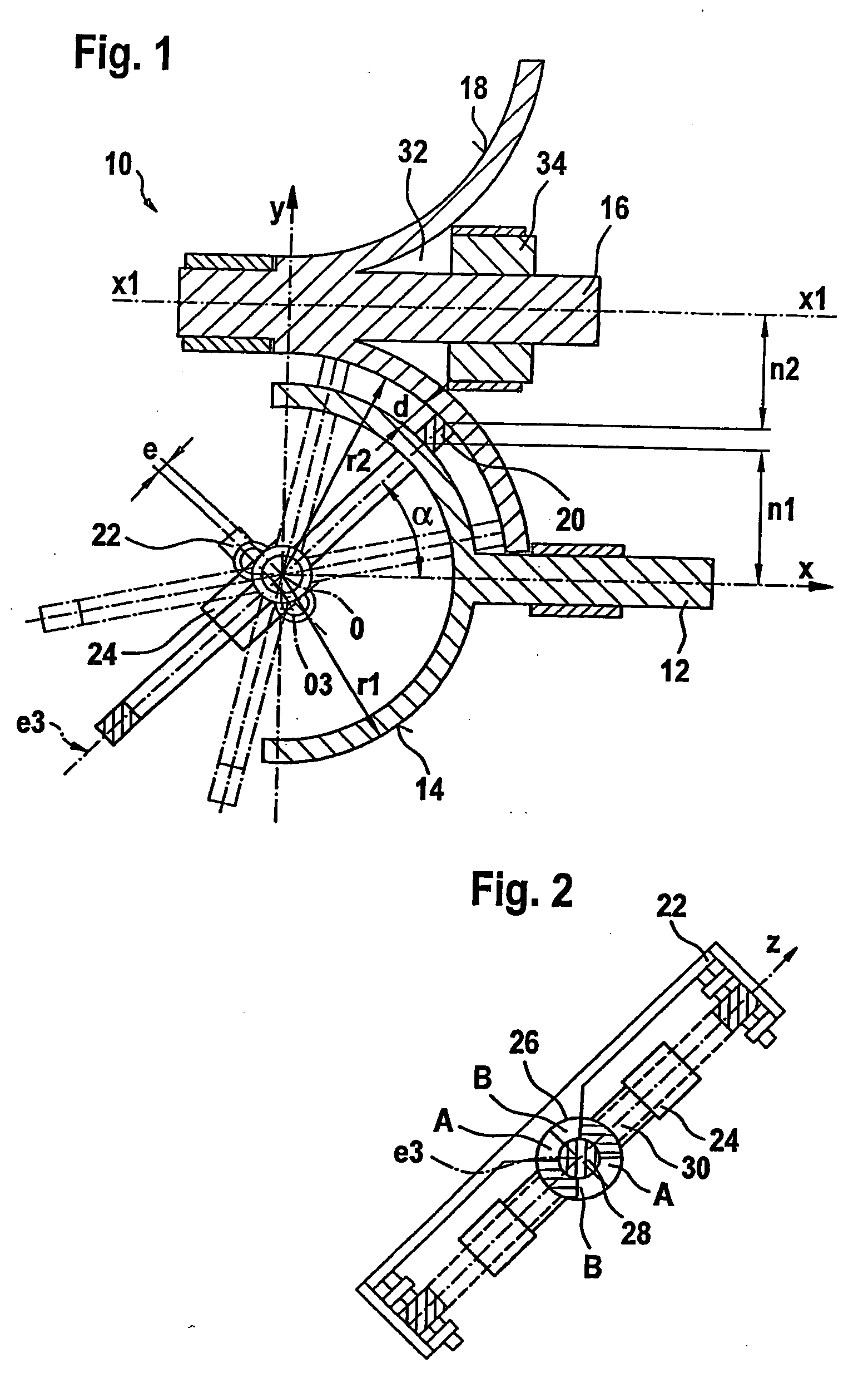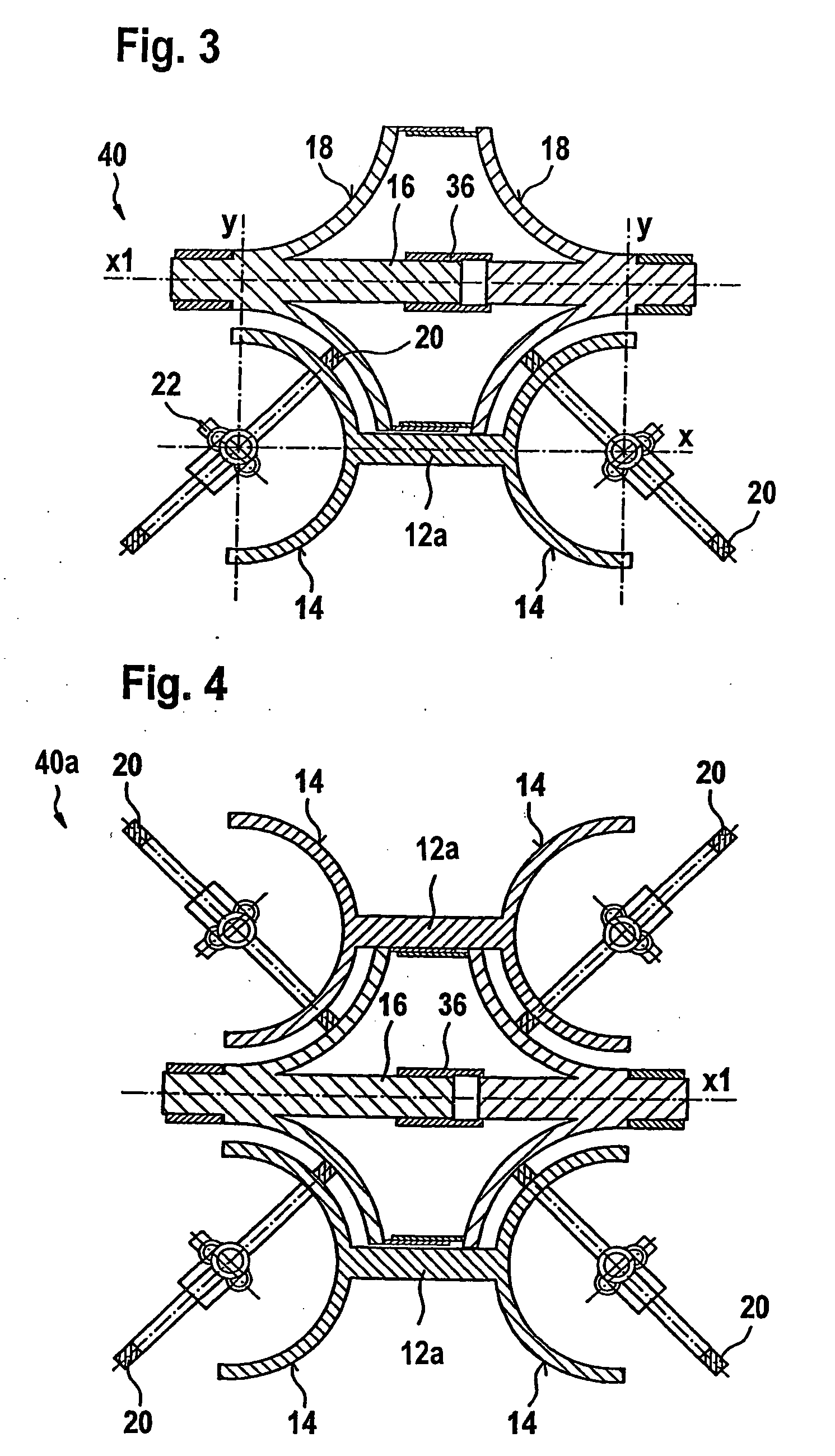Variable speed drive for a continuously variable transmission
a technology of variable speed drive and transmission, which is applied in the direction of belt/chain/gearing, friction gearing, belt/chain/gearing, etc., can solve the problems of significant change in transmission ratio, avoid the very expensive design of chain, and avoid noisy operation.
- Summary
- Abstract
- Description
- Claims
- Application Information
AI Technical Summary
Benefits of technology
Problems solved by technology
Method used
Image
Examples
Embodiment Construction
[0025]FIG. 1 shows a cross section through a variable speed drive in accordance with one embodiment of the present invention. The plane of the cross section is the plane in which the elements that transmit the torque between the input and output shafts bear against each other. The variable speed drive 10 includes a first shaft 12, which is supported in a housing (not shown) so that it can rotate around the axis of rotation x. On one end of the shaft 12 is a first transmission surface 14, which is non-rotatably connected to the shaft 12 or is fabricated integrally with it.
[0026] The first transmission surface 14 is formed by the external surface of a segment of a sphere, approximately a hemisphere, which is attached to rotating shaft 12 so that the rotational axis of symmetry axis of the spherical surface coincides with the axis of rotation x. In addition, the spherically curved transmission surface 14 is connected to the shaft 12 in such a way that it is convex in the direction of ...
PUM
 Login to View More
Login to View More Abstract
Description
Claims
Application Information
 Login to View More
Login to View More - R&D
- Intellectual Property
- Life Sciences
- Materials
- Tech Scout
- Unparalleled Data Quality
- Higher Quality Content
- 60% Fewer Hallucinations
Browse by: Latest US Patents, China's latest patents, Technical Efficacy Thesaurus, Application Domain, Technology Topic, Popular Technical Reports.
© 2025 PatSnap. All rights reserved.Legal|Privacy policy|Modern Slavery Act Transparency Statement|Sitemap|About US| Contact US: help@patsnap.com



